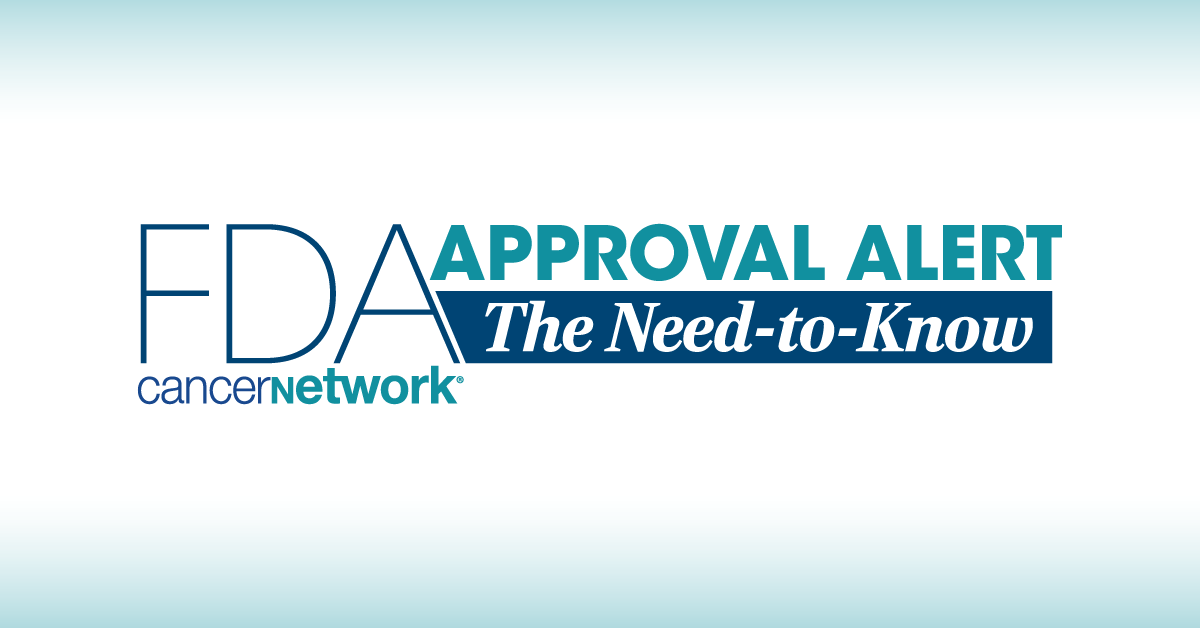FDA Approves Treosulfan Combo Injection for HSCT Conditioning in AML/MDS
Treosulfan plus fludarabine is now approved by the FDA as an injection for allo-HSCT conditioning for patients with AML or MDS.
The approval was based on results from a phase 3 trial (NCT00822393) with the aim to compare the efficacy and safety of treosulfan-based conditioning with intravenous busulfan-based reduced-intensity conditioning.

The FDA has approved treosulfan (Grafapex) plus fludarabine as an injection prior to allogeneic hematopoietic stem cell transplantation (allo-HSCT) for patients who are 1 year or older with acute myeloid leukemia or myelodysplastic syndrome, according to a press release from Medexus Pharma.1
The approval was based on results from a phase 3 trial (NCT00822393) with the aim to compare the efficacy and safety of treosulfan-based conditioning with intravenous busulfan-based reduced-intensity conditioning. Patients were given 4 x 0.8 mg/kg doses per day of intravenous busulfan on days –4 and –3 plus treosulfan at 10 g/m2 intravenously on days –4, –3, and–2.2
The primary end point was event-free survival (EFS). The secondary end point was a comparative evaluation of the incidence of CTC grade 3/4 mucositis or stomatitis between day –6 and day +28.
"We are pleased to report this positive development, which marks a strategically important step forward for our business and, importantly, will now benefit eligible patients across the US," commented Ken d'Entremont, Medexus's chief executive officer.1 "Not only will [treosulfan] make a substantial contribution to allo-HSCT in the US, but it also solidifies Medexus's leadership position in this therapeutic field."
Updated findings highlighted in a news release from the FDA noted that the hazard ratio for overall survival (OS) with treosulfan vs busulfan across all randomly assigned patients was 0.67 (95% CI, 0.51-0.90).3 Additionally, OS hazard ratios were 0.73 (95% CI, 0.51-1.06) in those with AML and 0.64 (95% CI, 0.40-1.02) in the MDS population.
Results for this trial were previously published in The Lancet Hematology and showed that the primary end point was met at the second planned interim analysis. Overall, 476 patients were enrolled in the trial, with 240 in the busulfan group and 221 in the treosulfan group.4
The median follow-up was 15.4 months for those given treosulfan and 17.4 months for those given busulfan. The 2-year EFS rate was 64.0% (95% CI, 56.0%-70.9%) in the treosulfan group and 50.4% (95% CI, 42.8%-57.5%) in the busulfan group (HR, 0.65; 95% CI, 0.47-0.90; P <.0001 for non-inferiority and P = .0051 for superiority).
The most common adverse effects that were grade 3 or higher included abnormal blood chemistry results (15% vs 15%) and gastrointestinal disorders (11% vs 16%) between the treatment arms.
In September 2024, the new drug application for treosulfan was extended by 3 months. The FDA needed additional time to review supplemental analyses on previously submitted data that were requested.5
References
- Medexus announces FDA approval of GRAFAPEX (treosulfan) for injection and provides business update. News release. Medexus Pharma. January 22, 2024. Accessed January 24, 2025. https://shorturl.at/FQQ72
- Clinical phase III trial treosulfan-based conditioning versus reduced-intensity conditioning (RIC). ClinicalTrials.gov. Accessed January 24, 2025. https://shorturl.at/OJLKM
- FDA approves treosulfan with fludarabine as a preparative regimen for alloHSCT in adult and pediatric patients with AML or MDS. News release. FDA. February 6, 2025. Accessed February 6, 2025. https://tinyurl.com/3znkk63b
- Beelen DW, Trenschel R, Stelljes M, et al. Treosulfan or busulfan plus fludarabine as conditioning treatment before allogeneic haemopoietic stem cell transplantation for older patients with acute myeloid leukaemia or myelodysplastic syndrome (MC-FludT.14/L): a randomised, non-inferiority, phase 3 trial. Lancet Haematol. 2020;7(1):e28-e39. doi:10.1016/S2352-3026(19)30157-7
- Medexus provides update on treosulfan NDA review process and extended PDUFA goal date. News release. Medexus Pharma. September 16, 2024. Accessed January 24, 2025. https://shorturl.at/5eAuS
Newsletter
Stay up to date on recent advances in the multidisciplinary approach to cancer.